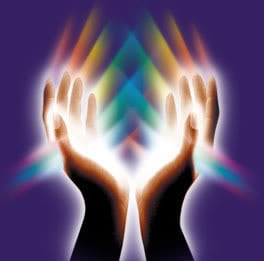Years ago I used to spend a considerable amount of time in my other favorite church – and it’s one I’m sure many of you are familiar with, and many others may be members.
The church was The Church of Skiing, and for years it was my weekend practice to be up on the hill communing with nature.
Years later when one of my congregants would confess to me that he wasn’t present on Sunday because he was skiing (he had the added calling of being a member of the ski patrol), I understood. But I did give him a bit of a nudge that he could change his ski day if he liked.
The reason I’m mentioning this is because it reminded me of this third Step Dr. Ernest Holmes outlines in the introduction of Science of Mind: What It Does.
At one point in the early days of the Kelowna center we used to hold an annual board meeting at our local ski hill. It was a wonderful retreat like day, and while many board members were skiers (and no, it wasn’t a prerequisite) there were others who were newbies.
The previous night we had been talking about treatment, and how powerful it is, and yet how challenging it can be to get it just right. How do you know you’ve created a solid treatment for yourself that without question will result in a demonstration?
We all put in our two cents worth, and then the next day went on the hill.
The slope was fairly simple, but I decided to stop and take a break just in time to overhear one of our best skiers carefully instruct one of our novices – who happened to be a second year Science of Mind student – who had just fallen.
I still remember his words.
“You’re moving your shoulder,” he said. “Your left shoulder, and as a result your losing your grip on your left ski to make the turn.”
“You’re right,” she said. “I guess I do that when I get nervous. What’s the option?”
He said: “You need to face the mountain. It may feel scary, but when you face the mountain, you’ll have more control. Then you can firmly put weight on each foot alternately, and you’ll be down the mountain in no time.”
I watched as she took in his words. I could see the light bulb go on – not just for the purpose of skiing but for the purpose of so much more.
Ernest Holmes says: “a passive meditation will never produce an active demonstration, any more than an artist can paint a picture by sitting down with his paints, but never using them.”
Our novice skier had been passively going down the hill – uncertain as to her ability to succeed.
Holmes also says we need to be “conscious of the good” if we want success, and we need to be direct about it – there is no room for wishy-washiness here.
In every instances, it is just as he said: face the mountain. Face the mountain square on, know what your objective is, and trust and know that it is good. The rest, is up to God.
We create the mold of the life we wish to have – and we fill it with love. Then the rest is up to the law – the way it works.
It’s like skiing. There are as many ways to go down the mountain as there are skiers – no one right way. It’s all good, and all God.
Become conscious of the good.
Love rules through law.











